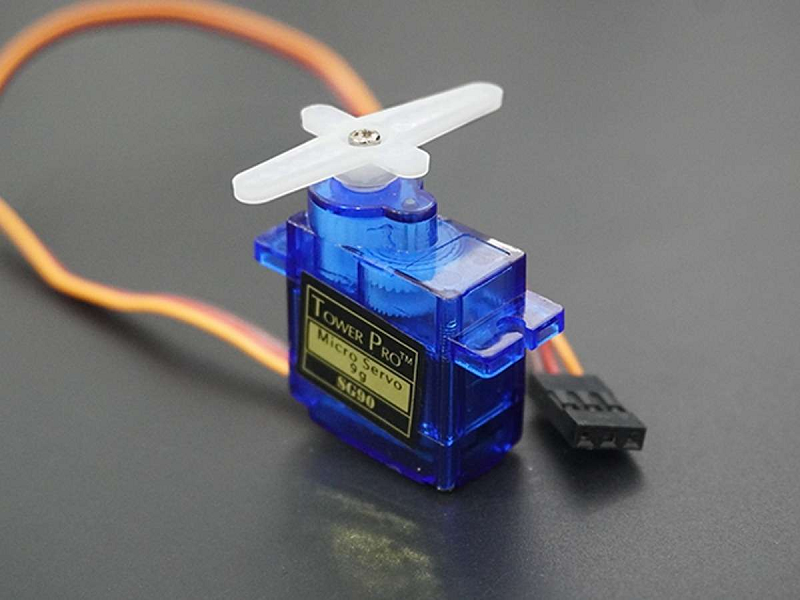Servo motors are essential components in a wide range of industries, from robotics and manufacturing to automotive and aerospace. These motors provide precise control of angular or linear position, velocity, and acceleration, making them invaluable for applications that require high precision and efficiency. Given their significance, the global market for servo motors is robust and growing, and understanding the dynamics of servo motor importers can provide insights into industrial trends, economic factors, and the evolution of technology in various sectors.
What are Servo Motors?
Servo motors are rotary actuators or linear actuators that enable precise control of angular or linear position, velocity, and acceleration. They consist of a motor coupled to a sensor for position feedback. They are widely used in applications such as robotics, CNC machinery, automated manufacturing, and more. The servo motor system typically includes three main components: a controlled device, a feedback mechanism, and a controller. The interplay of these components ensures accurate control of the motor’s movement and positioning.
Key Global Markets for Servo Motors
The demand for servo motors is spread across various regions, with significant markets in North America, Europe, Asia-Pacific, and Latin America. Each of these regions has its unique characteristics and drivers that influence the import and use of servo motors.
-
North America:
- United States: The US is a major market for servo motors, driven by its advanced manufacturing sector, aerospace industry, and the burgeoning field of robotics. The country’s emphasis on automation and high-precision manufacturing processes boosts the demand for high-quality servo motors.
- Canada: Canada’s industrial machinery and automotive sectors are key consumers of servo motors. The country’s focus on technological advancements and automation in manufacturing also propels the demand.
-
Europe:
- Germany: Known for its engineering prowess, Germany is a significant importer of servo motors. The country’s strong automotive and industrial machinery sectors are the primary drivers of this demand.
- United Kingdom: The UK’s aerospace and robotics industries contribute to the high demand for servo motors. The country’s focus on innovation and technology adoption also supports the import of advanced servo motor systems.
- France: France’s automotive, aerospace, and industrial automation sectors drive the demand for servo motors. The country’s emphasis on modernizing its industrial base further propels this demand.
-
Asia-Pacific:
- China: As a manufacturing powerhouse, China is a leading importer and consumer of servo motors. The country’s rapid industrialization, coupled with its focus on automation and robotics, makes it a critical market.
- Japan: Japan’s robotics and automotive sectors are renowned globally. The country’s advanced technological landscape ensures a consistent demand for high-precision servo motors.
- South Korea: South Korea’s strong electronics and automotive industries contribute to its significant import of servo motors. The country’s push towards smart manufacturing and Industry 4.0 also drives demand.
-
Latin America:
- Brazil: Brazil’s growing industrial base and automotive sector create a steady demand for servo motors. The country’s focus on modernization and increasing production efficiency supports this trend.
- Mexico: With its strong automotive industry and increasing adoption of automation in manufacturing, Mexico is an important market for servo motor imports.
Factors Influencing Servo Motor Imports
Several factors influence the import of servo motors, including technological advancements, economic conditions, industrial needs, and regulatory frameworks.
-
Technological Advancements: The continuous evolution of servo motor technology, with improvements in precision, efficiency, and integration capabilities, drives demand. Importers seek the latest and most advanced systems to stay competitive.
-
Economic Conditions: The overall economic health of a country significantly impacts its import capacity. Strong economies with robust industrial sectors are more likely to invest in high-quality servo motors.
-
Industrial Needs: Different industries have varying requirements for servo motors. For instance, the automotive industry requires motors for precise control in assembly lines, while the aerospace industry needs them for control surfaces and flight simulation.
-
Regulatory Frameworks: Import regulations, tariffs, and trade agreements play a crucial role in determining the flow of servo motors across borders. Favorable trade policies can enhance import activities, while restrictive measures can hinder them.
Leading Servo Motor Manufacturers
Several companies dominate the global servo motor manufacturing market, supplying high-quality products to importers worldwide.
-
Siemens AG: A German multinational, Siemens is a leader in automation and control systems, providing advanced servo motors for various industries.
-
Yaskawa Electric Corporation: Based in Japan, Yaskawa is renowned for its servo motors and drives, particularly in the robotics and industrial automation sectors.
-
Mitsubishi Electric Corporation: Another Japanese giant, Mitsubishi Electric, offers a wide range of servo motors known for their precision and reliability.
-
Schneider Electric: A French multinational, Schneider Electric, provides comprehensive automation solutions, including high-performance servo motors.
-
Rockwell Automation: An American company, Rockwell Automation, supplies advanced servo motor systems, focusing on industrial automation and information solutions.
Challenges Faced by Servo Motor Importers
Despite the growing demand, servo motor importers face several challenges that can impact their operations.
-
Supply Chain Disruptions: Global events, such as the COVID-19 pandemic, have highlighted vulnerabilities in supply chains. Importers must navigate these disruptions to ensure a steady supply of servo motors.
-
Regulatory Compliance: Adhering to varying regulations and standards across different countries can be complex and costly. Importers need to stay updated on regulatory changes to avoid compliance issues.
-
Technological Compatibility: Ensuring that imported servo motors are compatible with existing systems and technologies can be challenging. Importers must work closely with manufacturers to address compatibility issues.
-
Economic Fluctuations: Exchange rate volatility and economic downturns can impact import costs and demand. Importers need to manage these risks to maintain profitability.
Conclusion
Servo motor importers play a crucial role in the global industrial landscape, ensuring the availability of high-precision motors that drive automation and innovation across various sectors. Understanding the dynamics of servo motor imports, including key markets, influencing factors, and challenges, provides valuable insights into the broader trends shaping modern industries. As technology continues to advance and industries evolve, the demand for sophisticated servo motors is expected to grow, further emphasizing the importance of efficient and effective import practices.




